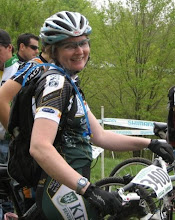We've done an extraordinary amount of skiing in the rain this year, it seems. Lots of weekend rain capped off most recently by a fun wet day at Elk Mountain on Monday. I'm becoming better at skiing in the rain and enjoying it.
The snow is great on most rain days here in the mid-atlantic, but when you have to be out or you want to be out, it's important to dress appropriately and have reasonable expectations for the day.
Whether teaching or freeskiing, my tips for skiing in the rain:
The snow is great on most rain days here in the mid-atlantic, but when you have to be out or you want to be out, it's important to dress appropriately and have reasonable expectations for the day.
Whether teaching or freeskiing, my tips for skiing in the rain:
- Start with a good base layer. When the chances of getting wet are high, bet on wool. Or polypropylene. Cotton will just make you colder. This goes for socks too.
- Rookie ski instructors teach the most on rain days. They have the least rain gear. Be prepared with what you've got.
- Have your best rain gear, even if it looks ridiculous. Gore-tex is great. Clothing made for fly fishing and hiking can be even better. Watch out for zippers on pants - water pools there and then runs in all at once while you're on the lift.
- Bring more mittens than you think you can possibly wear. They will get wet. You will want to put dry ones on. Divide the number of pairs by the number of hours you'll be at the hill and figure out how long you have to wear each pair.
- A complete change of clothes (yes, even undergarments!) at the end of the day is awesome.
- Put stuff you care about (wallet, business cards, cell phone, etc) in an interior pocket or ziplock. Even with fancy zippers, if you don't zip it all the way up, a little drip could cause trouble.
- Try skiing with and without your goggles - sometimes the latter works surprisingly better.
- All the boot dryers you own will help get ready for day 2.
- Tune your skis. The wet, granular snow that we generally have when it rains is tough on bases, so you'll want to wax 'em afterwards. And often it gets cold after a rain - well-tuned edges allow precise control on the next day hardpack.

good tips... i would add the best tip i got my first year from my ski school director.. go to home depot and get black plastic gloves (they are like the yellow dishwashing gloves only thicker and black) .. get them big and then wear them over your ski golves.. your hands will stay dry all day....from psychojock at mount sunapee, NH
ReplyDelete